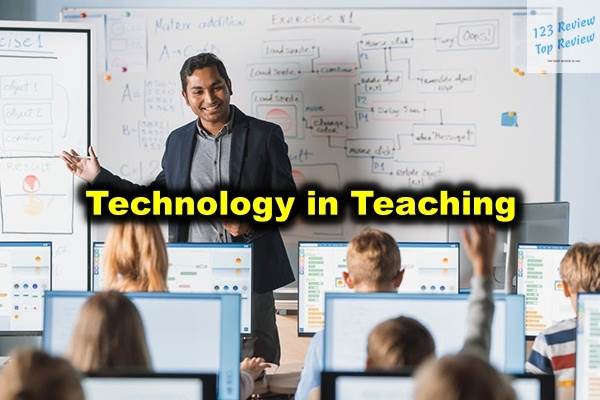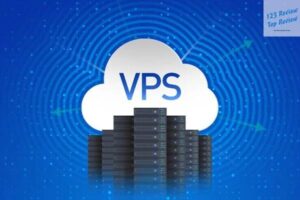In the modern educational landscape, the integration of technology into teaching practices has become not just a supplement but a necessity. The proliferation of digital tools and platforms has fundamentally altered how educators teach and how students learn, making education more dynamic, accessible, and personalized.
In this article, 123 Review exploration delves into the myriad ways technology is reshaping the classroom, the opportunities it presents, the challenges it poses, and the future trends that will continue to evolve the educational experience.
The Role of Technology in Modern Classrooms
The traditional classroom has undergone a significant transformation with the advent of technology. Gone are the days when teaching was confined to chalkboards and textbooks. Today, technology enables a more interactive, engaging, and flexible learning environment, providing tools that cater to diverse learning needs and styles.
Interactive Whiteboards
Interactive whiteboards have become a staple in modern classrooms, replacing the traditional chalkboard with a versatile, digital interface. These boards allow educators to present lessons that are visually rich and interactive, engaging students in ways that were previously unimaginable. Teachers can display videos, images, and other multimedia content to enhance comprehension and retention. The ability to annotate over digital content in real-time makes lessons more dynamic, allowing for spontaneous explanations and adjustments based on student responses.

Moreover, interactive whiteboards facilitate collaborative learning. Students can interact directly with the board, participating in group activities such as solving problems, brainstorming ideas, or creating mind maps. This hands-on involvement fosters a more inclusive learning environment, where every student can contribute and engage with the material.
Learning Management Systems
Learning Management Systems (LMS) have revolutionized the administration and delivery of educational content. An LMS serves as a central hub where teachers can upload course materials, assign homework, administer quizzes, and track student progress. This centralized approach not only streamlines the learning process but also allows for a more personalized educational experience.
One of the key benefits of an LMS is the ability to offer differentiated instruction. Teachers can create and assign different resources to cater to the varying abilities and learning styles of their students. For instance, a student struggling with a particular concept can be provided with additional practice exercises or video tutorials, while another who has mastered the material can be challenged with more advanced content.
Additionally, LMS platforms often include communication tools that facilitate interaction between teachers and students, as well as among students themselves. This continuous communication helps to create a more supportive learning environment, where students can seek help and collaborate with peers outside of classroom hours.
Classroom Response Systems
Classroom Response Systems (CRS), often referred to as “clickers,” are handheld devices or mobile apps that allow students to respond to questions posed by the teacher in real-time. This technology enhances classroom interaction by enabling immediate feedback and assessment.
For example, a teacher might pose a multiple-choice question during a lesson. Students use their CRS devices to submit their answers, and the aggregated responses are displayed on the interactive whiteboard. This instant feedback allows the teacher to gauge student understanding and adjust the lesson accordingly, perhaps revisiting a concept that many students found challenging.
CRS technology also supports formative assessment, helping teachers identify learning gaps as they occur, rather than waiting for summative assessments like exams. This allows for timely intervention and personalized support, ultimately leading to better learning outcomes.
E-books and Digital Textbooks
The shift from traditional print textbooks to e-books and digital textbooks is another significant change in modern education. Digital textbooks offer several advantages over their printed counterparts, including cost savings, accessibility, and interactivity.
E-books are often more affordable than physical textbooks, making them a cost-effective option for schools and students alike. Additionally, digital textbooks are easily updated, ensuring that students have access to the most current information. This is particularly important in rapidly evolving fields such as science and technology, where new developments occur frequently.
Beyond cost and accessibility, digital textbooks provide interactive features that enhance learning. Students can highlight text, take notes, and access multimedia resources directly within the textbook. Many e-books also include quizzes and interactive exercises, allowing students to test their understanding as they progress through the material.
Online Learning Platforms
The advent of online learning platforms has expanded the boundaries of education, making learning more flexible, accessible, and personalized. These platforms offer a wide range of educational opportunities, from free courses for casual learners to comprehensive degree programs for career advancement.
MOOCs (Massive Open Online Courses)
Massive Open Online Courses (MOOCs) have democratized education by providing access to high-quality courses from prestigious universities and institutions to anyone with an internet connection. These courses cover a wide array of subjects, from computer science and engineering to humanities and social sciences.
MOOCs are particularly valuable for lifelong learners and professionals seeking to update their skills or explore new fields. They offer the flexibility to learn at one’s own pace and often include interactive elements such as quizzes, discussion forums, and peer assessments. While most MOOCs are free to audit, many also offer paid options for certifications or credit, making them a viable alternative to traditional education.
The impact of MOOCs on education is profound. By breaking down geographical and financial barriers, MOOCs have made education accessible to millions of people worldwide who might not otherwise have the opportunity to learn from top-tier institutions.
Virtual Classrooms
Virtual classrooms replicate the experience of a physical classroom in an online environment, allowing students and teachers to interact in real-time through video conferencing, chat, and collaborative tools. This mode of learning has become increasingly popular, particularly during the COVID-19 pandemic, when physical classrooms were inaccessible.
Virtual classrooms offer several advantages, including flexibility and convenience. Students can attend classes from anywhere, eliminating the need for commuting and allowing for a better balance between education and other commitments. Additionally, virtual classrooms can accommodate diverse learning styles, with features such as recorded sessions that allow students to review lessons at their own pace.
However, virtual classrooms also pose challenges, such as the need for reliable internet access and the potential for reduced social interaction. Educators must find ways to keep students engaged and connected, using interactive tools and fostering a sense of community among participants.
Interactive Educational Apps
The rise of smartphones and tablets has led to an explosion of educational apps designed to make learning more engaging and accessible. These apps cover a wide range of subjects and skill levels, from basic math and reading skills for young children to advanced topics for college students and professionals.
Educational apps often use gamification techniques, such as rewards, levels, and challenges, to motivate learners and make the learning process more enjoyable. For example, language learning apps like Duolingo use a game-like interface to help users build vocabulary and grammar skills through interactive exercises and quizzes.
These apps are particularly effective for self-paced learning, allowing students to practice skills and reinforce concepts outside of the traditional classroom setting. They also cater to various learning styles, offering visual, auditory, and kinesthetic activities that appeal to different types of learners.
Learning Analytics
Learning analytics involves the collection and analysis of data generated by students as they interact with educational content and platforms. This data-driven approach provides valuable insights into student behavior, performance, and learning outcomes, enabling educators to make informed decisions about instruction and intervention.
For example, learning analytics can identify patterns in student engagement, such as which activities or materials are most effective in promoting understanding and retention. Educators can use this information to tailor instruction, provide targeted support, and optimize the learning experience for individual students.
In addition to improving instruction, learning analytics can also help institutions monitor and improve the overall effectiveness of their programs. By analyzing data on student performance and retention, schools can identify areas for improvement and implement changes to enhance educational outcomes.
Integrating Technology in English Language Teaching
The integration of technology into English Language Teaching (ELT) has opened up new possibilities for language learners, providing tools and resources that enhance language acquisition and proficiency.
Digital Assessment Tools
Digital assessment tools have transformed the way language proficiency is measured, offering more accurate, efficient, and flexible methods of evaluation. These tools range from automated testing platforms that administer and grade exams to software that analyzes written or spoken language for accuracy and fluency.
One of the key advantages of digital assessment tools is the immediacy of feedback. Students receive instant results on quizzes and tests, allowing them to identify and address areas of weakness promptly. Additionally, digital assessments often include adaptive testing features, which adjust the difficulty of questions based on the student’s performance, providing a more personalized evaluation experience.
These tools also facilitate formative assessment, allowing teachers to monitor progress over time and adjust instruction accordingly. For example, a teacher might use digital tools to track a student’s vocabulary acquisition, providing additional practice or resources as needed to ensure mastery.
Language Learning Software
Language learning software has become an invaluable resource for both classroom and self-directed learning. Programs like Duolingo, Rosetta Stone, and Babbel offer interactive exercises and activities designed to build language skills in a structured, engaging manner.
These software programs typically include features such as speech recognition, which allows learners to practice pronunciation and receive feedback on their spoken language. They also offer a variety of exercises that target different aspects of language acquisition, including vocabulary, grammar, listening comprehension, and writing skills.
One of the benefits of language learning software is its adaptability. Many programs use algorithms to tailor the learning experience to the user’s proficiency level and learning pace, ensuring that each lesson is challenging yet achievable. This personalized approach helps learners build confidence and progress more quickly in their language studies.
Online Collaboration Tools
Online collaboration tools, such as Google Docs, Microsoft Teams, and Slack, have become essential in language learning, particularly for group work and peer interaction. These tools enable students to collaborate on projects, share resources, and communicate with one another in real-time, regardless of their physical location.
For example, a group of students working on a collaborative writing assignment can use Google Docs to draft and edit their work together. The platform’s commenting and suggestion features allow for real-time feedback and discussion, fostering a collaborative learning environment.
Online collaboration tools also support language practice by facilitating conversation and interaction in the target language. Through video calls, chat, and collaborative platforms, students can engage in language exchange, practice speaking and listening skills, and receive feedback from peers and instructors.
Multimedia Resources
Multimedia resources, including videos, podcasts, and interactive websites, provide rich, authentic content that enhances language learning. These resources expose students to real-world language use in a variety of contexts, helping them develop listening, reading, and comprehension skills.
For example, language learners can watch videos in the target language, listen to podcasts that feature native speakers, or engage with interactive websites that offer language practice through games and exercises. These resources help learners develop a deeper understanding of the language, including its nuances, idioms, and cultural references.
Moreover, multimedia resources cater to different learning styles, offering visual, auditory, and kinesthetic activities that appeal to a wide range of learners. This variety helps to keep students engaged and motivated, making language learning more enjoyable and effective.
Challenges of Technology in Education
While the integration of technology into education offers numerous benefits, it also presents significant challenges that must be addressed to ensure equitable and effective learning outcomes.
Digital Divide
The digital divide refers to the gap between those who have access to technology and the internet and those who do not. This disparity can create significant educational inequalities, particularly for students in underserved or rural areas.
Students without access to reliable internet or digital devices may struggle to participate in online learning, complete assignments, or access educational resources. This lack of access can hinder their academic progress and widen the achievement gap between different demographic groups.
Addressing the digital divide requires a multifaceted approach, including investment in infrastructure to ensure that all students have access to high-speed internet, providing digital devices to students in need, and offering support and training to help students and families navigate online learning environments.
Teacher Training and Professional Development
The effective integration of technology into education requires that teachers are adequately trained and supported. However, many educators may feel overwhelmed or unprepared to use new technologies in their classrooms, particularly if they lack prior experience or training in digital tools.
Professional development programs are essential for helping teachers acquire the skills and knowledge needed to effectively incorporate technology into their teaching practices. These programs should be ongoing, offering opportunities for teachers to stay up-to-date with the latest technological advancements and pedagogical strategies.
In addition to formal training, schools should provide ongoing support, such as access to instructional coaches or technology specialists who can assist teachers with troubleshooting, lesson planning, and the implementation of new tools and resources.
Cybersecurity Issues
The increased use of technology in education raises significant concerns about cybersecurity. Schools and educational institutions must take steps to protect student data and ensure that online platforms are secure from cyber threats.
Cybersecurity issues can range from data breaches and identity theft to cyberbullying and online harassment. Protecting students’ privacy and ensuring a safe online learning environment is paramount.
To address these challenges, schools should implement robust cybersecurity policies and practices, including the use of secure passwords, encryption, and two-factor authentication. Educators and students should also be educated about best practices for online safety, such as recognizing phishing scams, protecting personal information, and reporting suspicious activity.
Resistance to Change
Resistance to change is a common barrier to the adoption of new technologies in education. Some educators, students, and parents may be hesitant to embrace technology due to a lack of familiarity, fear of the unknown, or concerns about the effectiveness of digital tools.
Overcoming resistance to change requires a thoughtful approach that addresses the concerns and needs of all stakeholders. This might include providing clear evidence of the benefits of technology integration, offering training and support, and fostering a culture of innovation and experimentation in schools.
By demonstrating the positive impact of technology on student learning and providing the necessary resources and support, educators can help to build confidence and buy-in among those who may be resistant to change.
Future Trends in Educational Technology
As technology continues to evolve, several emerging trends are expected to shape the future of education. These trends have the potential to further enhance learning experiences, making education more personalized, engaging, and effective.
Artificial Intelligence in Education
Artificial Intelligence (AI) is poised to revolutionize education by providing personalized learning experiences that adapt to individual student needs. AI-driven tools can analyze data on student performance and learning behavior to offer customized content, real-time feedback, and even personalized tutoring.
For example, AI-powered learning platforms can adjust the difficulty of exercises based on a student’s progress, ensuring that they are consistently challenged but not overwhelmed. These platforms can also identify areas where a student is struggling and provide targeted resources to help them improve.
AI has the potential to support educators by automating administrative tasks, such as grading and attendance tracking, allowing teachers to focus more on instruction and student support. Additionally, AI can assist in identifying at-risk students and providing early interventions to prevent academic failure.
Gamification of Learning
Gamification involves the application of game design elements, such as points, badges, and leaderboards, to non-game contexts, including education. This approach can make learning more engaging and motivating for students, as it taps into their natural desire for competition, achievement, and recognition.
In a gamified learning environment, students might earn points for completing assignments, participate in challenges that reinforce key concepts, or progress through levels as they master new skills. These elements can make learning more fun and dynamic, encouraging students to stay engaged and motivated.
Gamification also promotes active learning, as students are often required to apply their knowledge in creative ways to solve problems or complete tasks. This active engagement can lead to deeper understanding and better retention of the material.
Augmented and Virtual Reality
Augmented Reality (AR) and Virtual Reality (VR) are emerging technologies that offer immersive learning experiences, allowing students to interact with digital content in new and exciting ways.
AR overlays digital information onto the physical world, enhancing the learning experience by providing additional context and interactive elements. For example, students studying anatomy might use AR to visualize the human body in 3D, exploring different organs and systems in detail.
VR, on the other hand, creates fully immersive virtual environments that can simulate real-world scenarios or transport students to entirely new settings. For example, history students might use VR to “visit” ancient civilizations, while science students might explore the depths of the ocean or the surface of Mars.
These technologies have the potential to make learning more experiential and hands-on, allowing students to explore concepts in ways that were previously impossible.
Personalized Learning Environments
Personalized learning environments leverage technology to tailor education to the individual needs and preferences of each student. By using data and AI, these environments can adapt content, pace, and instructional strategies to match a student’s strengths, weaknesses, and learning style.
For example, a personalized learning platform might recommend specific resources or activities based on a student’s performance on previous assignments. The platform could also adjust the difficulty of tasks in real-time, ensuring that the student is consistently challenged but not frustrated.
Personalized learning environments also offer flexibility, allowing students to learn at their own pace and in their own way. This approach can lead to improved engagement, motivation, and academic outcomes, as students are more likely to succeed when their learning experience is aligned with their individual needs.
Impact of Technology on Student Engagement
One of the most significant benefits of technology in education is its impact on student engagement. By providing interactive, personalized, and dynamic learning experiences, technology can help to keep students motivated and involved in their education.
Enhancing Student Participation
Interactive technologies, such as interactive whiteboards, CRS, and educational apps, encourage active participation from students. These tools make learning more engaging by involving students in the lesson, whether they are answering questions, solving problems, or participating in group activities.
For example, a teacher might use a CRS to pose a question during a lesson, prompting students to submit their answers using their devices. The real-time feedback allows the teacher to adjust the lesson based on student responses, ensuring that all students are actively engaged and on track.
This active participation helps to keep students focused and invested in their learning, leading to better retention and understanding of the material.
Encouraging Collaborative Learning
Technology also supports collaborative learning, allowing students to work together on projects and assignments, even when they are not physically together. Online collaboration tools, virtual classrooms, and social media platforms enable students to communicate, share resources, and collaborate in real-time.
Collaborative learning promotes the development of essential skills, such as teamwork, communication, and problem-solving. By working together, students can learn from one another, share different perspectives, and build a deeper understanding of the material.
Moreover, collaborative learning can be particularly beneficial for language learners, as it provides opportunities for authentic language practice and interaction.
Motivating Through Gamification
Gamification is a powerful tool for motivating students, as it combines learning with elements of play. By incorporating game-like features such as rewards, challenges, and levels, educators can make learning more enjoyable and motivating.
For example, a teacher might use a gamified platform to create a series of challenges that reinforce key concepts from a lesson. Students can earn points or badges for completing the challenges, progressing through levels as they master the material. This gamified approach can help to keep students engaged and motivated, encouraging them to take an active role in their learning.
Gamification also supports self-paced learning, as students can work through challenges at their own pace, building confidence as they progress.
Using Social Media for Education
Social media platforms can be leveraged for educational purposes, offering a space for students to connect, share resources, and participate in discussions. Educators can use social media to create learning communities, share content, and keep students engaged outside of the classroom.
For example, a teacher might create a class Facebook group where students can post questions, share resources, and discuss course material. This online community fosters a sense of belonging and encourages students to take an active role in their learning.
Social media can also be used to share educational content, such as videos, articles, and podcasts, making learning more accessible and engaging for students.
In conclusion, the integration of technology into teaching offers numerous benefits, from enhancing student engagement to providing personalized learning experiences. However, it also presents challenges that must be addressed to ensure that all students can benefit from these advancements. As technology continues to evolve, educators must stay informed and adaptable, embracing new tools and strategies to enhance the learning experience for all students.





